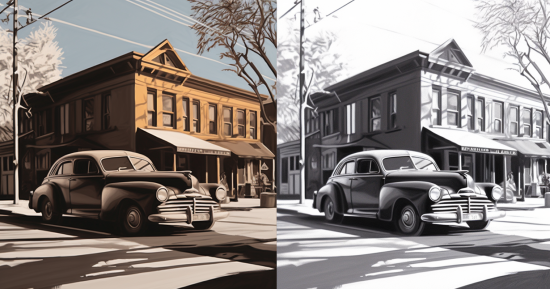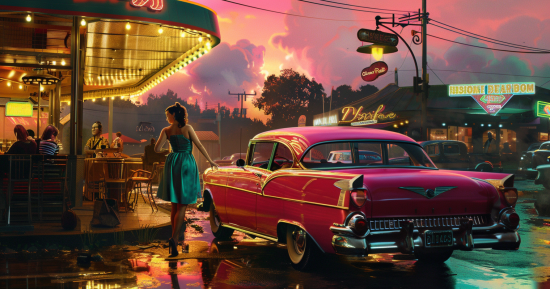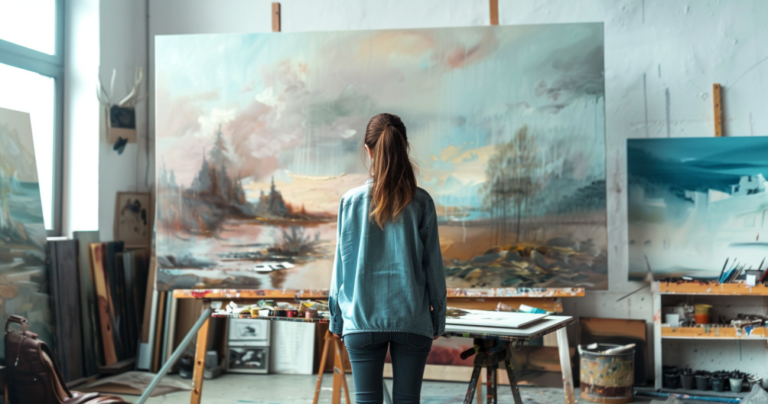Have you ever wondered about the power of a single color in art? Monochromatic art is a fascinating technique that uses only one hue to create a striking visual impact. In art, monochromatic means using different shades, tones, and values of a single color to compose an entire piece.
What Does Monochromatic Mean in Art
This approach has captivated artists and viewers alike for over a century.
From Kazimir Malevich’s groundbreaking white-on-white paintings to contemporary explorations, monochromatic works challenge our perceptions and evoke powerful emotions.
You might be surprised by how much depth and complexity can be achieved with just one color. As you delve into monochromatic art, you’ll discover its rich history and how artists have pushed its boundaries.
Whether you’re an art enthusiast or a budding artist, understanding this technique can open up new perspectives on color, form, and artistic expression. Let’s explore the captivating realm of monochromatic painting and its enduring influence on modern and contemporary art.
Understanding Monochromatic Art

Definition and Origin
Monochromatic painting is a style that employs only one color or hue in various shades and tints. Its roots can be traced back to the early 20th century when it emerged as part of the avant-garde movement.
Artists began experimenting with this technique to challenge traditional notions of art and representation. You’ll find that monochromatic works often push the boundaries of perception and meaning.
The style gained prominence with artists like Kazimir Malevich, whose White on White painting in 1918 became an iconic example of the genre.
Characteristics of Monochromatic Art

When you encounter monochromatic art, you’ll notice several key features:
- Use of a single base color
- Variations in tone, shade, and intensity
- Focus on texture and form
- Minimalist approach
These works often encourage you to contemplate the subtle nuances within a single color spectrum.
Artists achieve depth and dimension through skillful manipulation of light and shadow. Monochromatic art can evoke strong emotions and create a sense of unity or harmony. You might find yourself drawn into the piece, exploring the interplay of different shades and textures within the chosen color.
Applications and Techniques

Common Techniques in Monochromatic Art
To create monochromatic art, you can use several techniques to add depth and dimension.
Varying the value of your chosen color is a crucial approach. Start with a base hue and mix in white or black to create lighter or darker shades. Texture is another essential element. Experiment with different brushstrokes, impasto techniques, or mixed media to add visual interest. Try using smooth areas to contrast with rougher textures to create focal points.
Layering is also effective in monochromatic art. Build up thin layers of paint to create subtle variations in tone and depth. This technique can give your artwork a sense of luminosity and complexity.
Influence on Emotion and Perception
Your choice of color in monochromatic art can significantly impact the viewer’s emotional response. Cool colors like blue often evoke calmness and serenity, while warm colors like red can create a sense of energy and passion. The intensity of the color also plays a role.
Vibrant, saturated hues can be bold and attention-grabbing, while muted tones may create a more subdued atmosphere. Monochromatic art can also influence spatial perception.
Lighter values tend to appear to recede, while darker values come forward. You can use this effect to create a sense of depth and dimension in your work.
Frequently Asked Questions – What Does Monochromatic Mean in Art
How is the monochromatic style used in art paintings?
Artists use monochromatic style by selecting a single hue and exploring its various tints, shades, and tones. For example, you might see a painting with different intensities of blue, ranging from pale sky blue to deep navy. This technique creates depth and dimension while maintaining a cohesive color scheme.
What famous artworks are known for their monochromatic palette?
Kazimir Malevich’s “White on White” is a renowned monochromatic piece featuring subtle variations of white. Yves Klein’s “Blue Monochrome” series showcases his signature International Klein Blue. While not strictly monochromatic, Pablo Picasso’s “Blue Period” works heavily feature blue tones.
How can monochromatic colors create an impact on art?
Monochromatic colors create impact through their simplicity and focus.
You’ll notice how the absence of contrasting colors draws attention to texture, form, and composition. This approach can evoke strong emotions or create a sense of calm and unity within the artwork.
In what ways do artists convey personality through monochrome art?
Artists convey personality through their choice of color, brush strokes, and subject matter. You might see bold, energetic strokes in a red monochrome piece conveying passion. Alternatively, a serene blue landscape with smooth transitions could reflect a calm, reflective personality.
What is the significance of using black and white in monochromatic art?
Black and white monochromatic art emphasizes contrast, form, and texture.
You’ll notice how this style can create dramatic effects, highlight light and shadow, and convey a timeless quality. It’s often used in photography and printmaking to focus on composition and tone.






